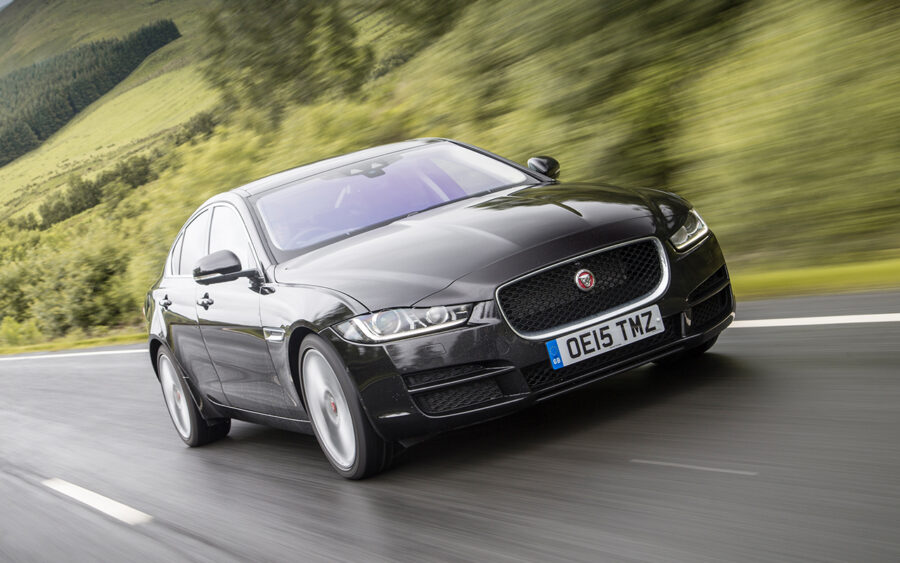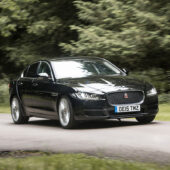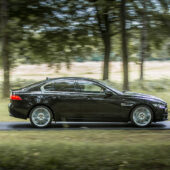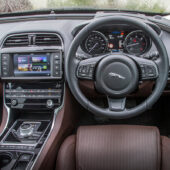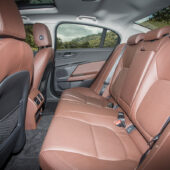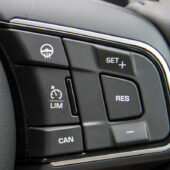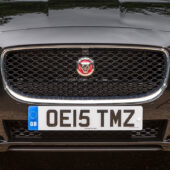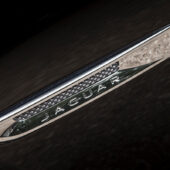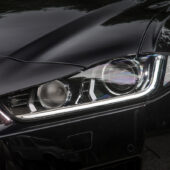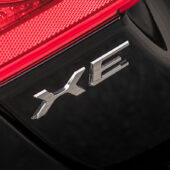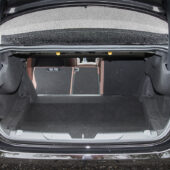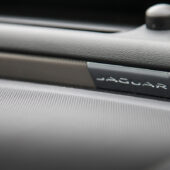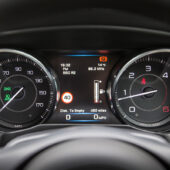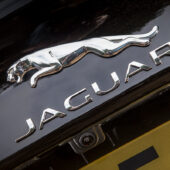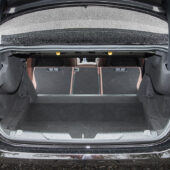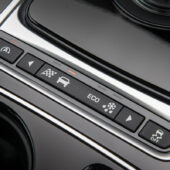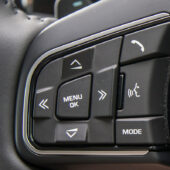Petrol-engined Jaguar XE models from 2015 to 2017 can now be found for sale from around £10,000 – so is now is a great time to buy
Words: Rob Hawkins Images: Jaguar
Jaguar had proven that a mid-sized saloon was popular when it manufactured the X-Type with front and all-wheel drive configurations, but while those models ceased production in 2009, new car buyers had to wait another six years before a similar-sized replacement arrived in the form of the XE.
Everything about the Jaguar XE looked promising from the start, especially the Solihull-constructed aluminium body that meant X-Type owners who’d been bitten by rust wouldn’t be facing the same dread again.
With prices starting at £26,995 for the entry-level two-litre petrol-powered SE model and up to £44,870 for the supercharged 3.0 V6 S, the range of rear-wheel-drive Jaguar XE saloons were hot on the heels of BMW’s 3 Series. The only limitations were that there was no estate model, and all petrol engines were mated to an automatic gearbox.
The early XE petrol models were initially powered by a 197bhp 1999cc four-cylinder turbocharged Ford EcoBoost engine or a supercharged three-litre V6 that produced an impressive 335bhp (upped to 375bhp in 2017). While the Ford EcoBoost engine was fitted to the XE until 2017, there’s confusion as to when Jaguar’s 1997cc Ingenium petrol engine was introduced (the diesel Ingenium was introduced from the start of the XE). If an XE is advertised with the letters GTDi against it, this doesn’t mean it’s a diesel, but it should have a Ford four-cylinder petrol engine powering it.
Under the bonnet, the top engine cover on the Ford EcoBoost has some silver stripes running from front to back, and the Jaguar logo is also coloured silver. The later Ingenium petrol engine’s cover is all black with a moulded Jaguar logo and the word Ingenium underneath it, so the two engines should be easy to tell apart by looking at them.
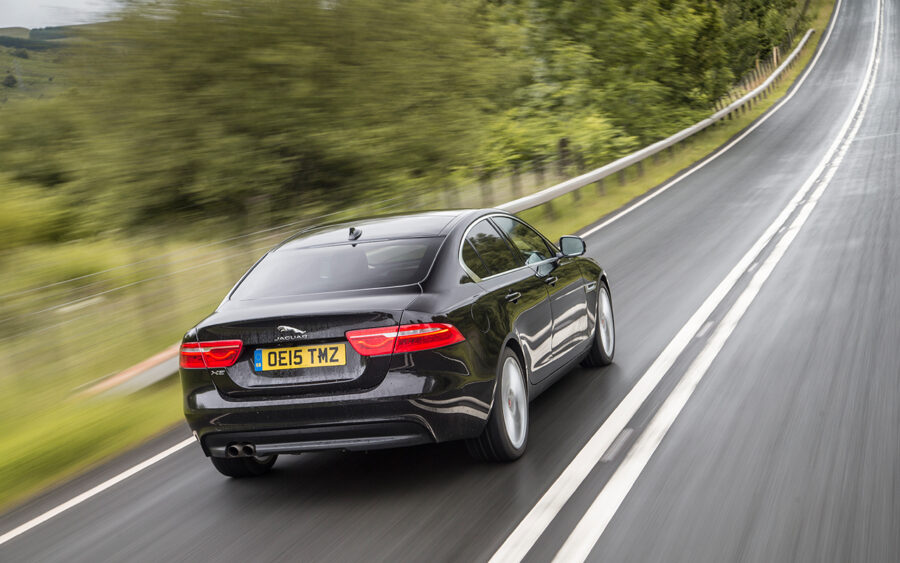
Performance figures for these early XE models quote a 0-60mph time of a little over seven seconds for the two-litre petrol engines and under five seconds for a V6. Fuel economy is supposed to be in the mid-thirties, and at the time of writing, car tax ranges from £290 for the entry-level 2.0 up to £330 for the V6 (based on models manufactured between 2015 and 2017).
The entry-level XE is called the SE and is equipped with 17” alloy wheels, dual-zone climate control, automatic lights and wipers and cruise control. The Prestige is the next step up from the SE, offering leather upholstery and heated front seats, whereas the R-Sport offers even more, with bi-Xenon headlights, a sports-styled interior and exterior (including sports-styled seats), sports suspension and 18” alloy wheels. Top of the list is the Portfolio model, which has an upgraded sound system with a soft-touch dashboard and electrically adjustable front seats.
All models are equipped with autonomous emergency braking (AEB), lane departure warning, reversing sensors, electric windows all round, cruise control, traction control and remote central locking, but surprisingly, a spare wheel is optional. Look for other desirable options, such as a panoramic sunroof and a heated windscreen and steering wheel.
The early XE models were involved in several recalls. For instance, vehicles manufactured between 2016 and 2017 had a technical issue that resulted in the digital instrument readout occasionally going blank for a split second. A software update was used to resolve this problem.
Fuel leaks have caused some recalls, such as a faulty fuel return hose on models manufactured between 2016 and 2017. On petrol models constructed between September 2016 and August 2017 the fuel rail can leak, which should have been fixed under a recall.
There have been a couple of recalls that relate to seatbelt pre-tensioners not operating correctly in the event of an accident. The earliest recall applies to models manufactured between February and December 2016. For models manufactured between September 2015 and March 2016, this only applies to the driver’s seatbelt pre-tensioner.
If you are at all concerned about the recalls for an XE that you are looking to buy, contact your local Jaguar dealership to ask for further information on whether any recalls have been completed for it. An online MoT check through the gov.uk website will also reveal whether there are any outstanding safety recalls.
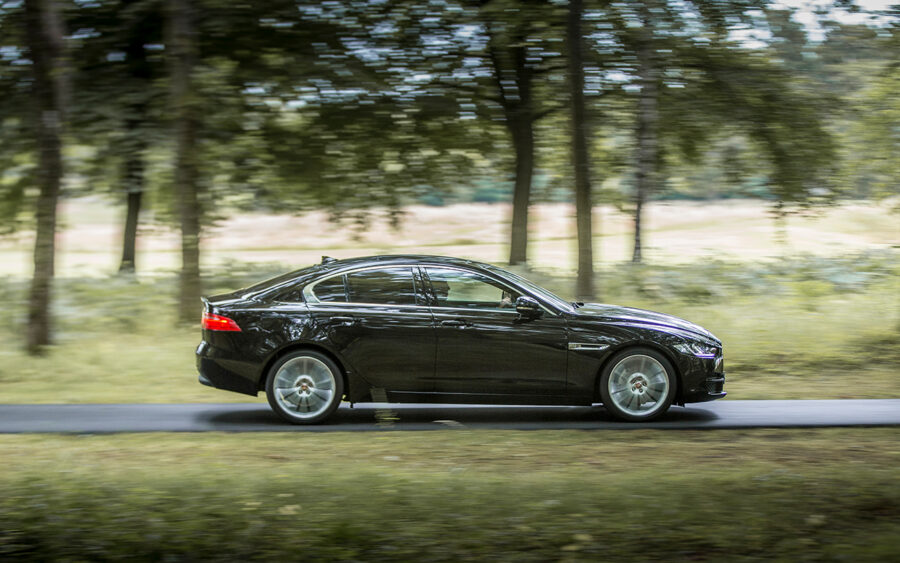
Bodywork
The Jaguar XE’s exterior is largely constructed from aluminium, so while the aforementioned problems of rusty X-Types are history, aluminium oxide can still exist. So, look for bubbling paintwork, especially along the door bottoms and around the lips of the wheelarches, which usually means the aluminium has corroded and the paintwork has lifted. This is often only cosmetic damage, but repairing it properly will generally involve rubbing down the affected area to remove the aluminium oxide, applying paint to block that corrosion, then respraying the bare metal and blowing in the surrounding area to ensure it doesn’t look out of place. Patches of bubbling paintwork along two doors on the same side of the vehicle can easily result in the entire side of the car being blown in to blend the repairs, so in such cases, there may not be much change from £500 or more.
If you are looking at an XE that has some accident damage, then rest assured that replacement used panels are generally quite cheap. Eurojag, for instance, sells front wings for around £120, a bonnet for £180 and a bare door also for £180. They sell quite a few headlights and rear light units, which cost £180 for headlights with halogen bulbs, £360 for Xenon and £90 for rear light units. Matt Norbury at North Wales Jag Centre has found that faulty rear light units are a common problem and at the time of speaking with him, he had replaced two that week.
Surprisingly, unlike other models, such as the XF, and Jaguar’s seemingly long-term reputation for failed door latches, this is yet to be a problem on the XE, although used latches from Eurojag cost around £36 each.
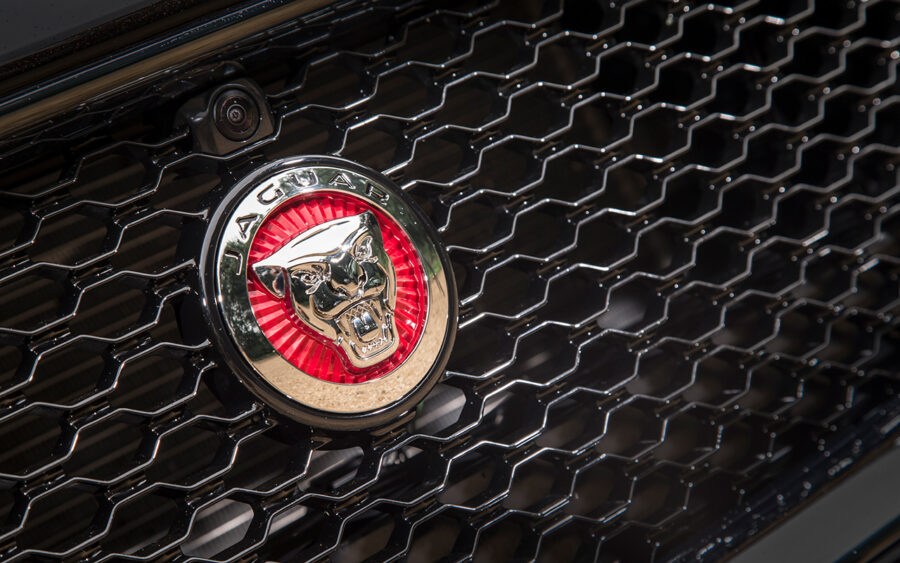
Engine and transmission
All four-cylinder two-litre petrol engines fitted to the early XEs have a timing chain. The Ford EcoBoost two-litre seems to be a strong and robust engine, as Adam Price at independent Jaguar Land Rover specialist Tom Lenthall explains: “The two-litre GTDi engine is almost bulletproof and I haven’t had any issues at all with them so far.”
Matt at North Wales Jag Centre is equally praiseworthy of all petrol engine XEs, cheekily saying, “On the whole the petrols are a good, solid and reliable vehicle, unlike the diesel, which I’m sure was a joint venture with Play-Doh and Cadbury. We’ve had a couple of camshaft sensor issues on the petrol four-cylinders – they have been the only breakdowns we’ve had.”
Mike Horner of Horner & Hudsons Limited is so confident of the Ford EcoBoost engine XE that he bought his own 2016 model as his daily runabout. He says it hasn’t given him any trouble and together with looking after several similar XEs for customers, he now recommends this model for anyone wanting a mid-sized saloon.
If instead, you are looking at a later XE with a petrol Ingenium two-litre engine, then Adam at Tom Lenthall says lambda sensor issues can arise along with problems with the VVT solenoids – there’s a small plunger inside that can stick, resulting in reduced performance. Richard Brooke at independent Jaguar specialist, Tasker & Lacy, also confirms that VVT solenoids can be problematic.
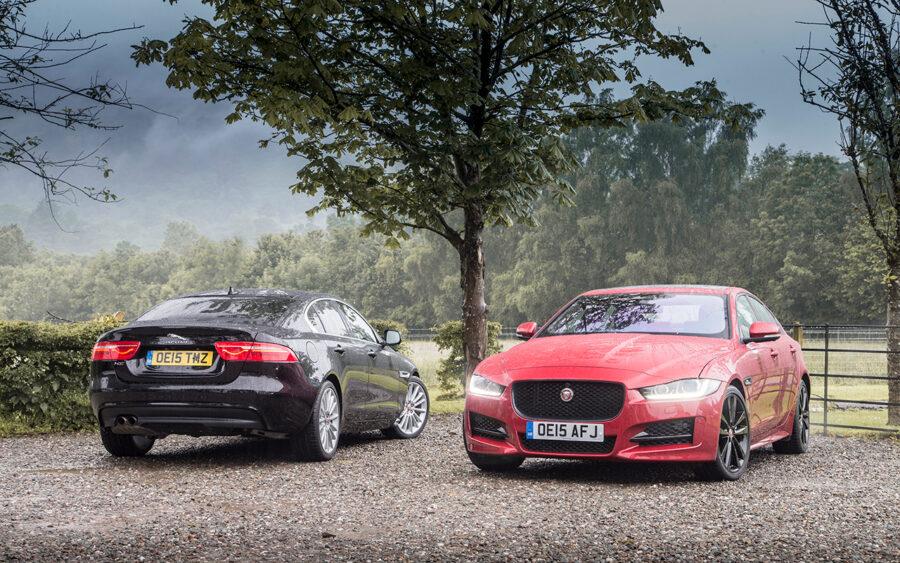
The Ford-derived V6 engine in the XE is also fitted to the F-Type and equipped with a timing chain. They can all have issues with leaking injectors that can stick open and dump unburned fuel into the exhaust. “They are then troublesome to remove, and it can be a costly affair,” warns Richard at Tasker & Lacy. Matt at North Wales Jag Centre adds, “Not having bonnet vents like the F-Type negates a lot of the issues of seized injectors, providing the charge cooler hasn’t been leaking! I have however had my own machining and drilling tools made to address seized injectors in situ.
“The three-litre V6 has various coolant leak issues, like the thermostat housing, front coolant manifold and rear coolant manifold,” says Adam at Tom Lenthall. So, it’s worthwhile looking around the top of the engine with a torch for signs of pink residue from dried coolant. Adam also warns that the damper on the supercharger pulley can wear, resulting in excessive noise from the unit.
If you prefer a Jaguar with a manual gearbox, then sadly, the petrol-powered XE models were only equipped with a ZF eight-speed auto. While seemingly strong and reliable, the auto box can become lazy and slow to kick down when requested. A software reset can often remedy such issues, along with an oil service.
An all-wheel-drive version of the XE was introduced in 2017, but up to that point, it was only rear-wheel drive.
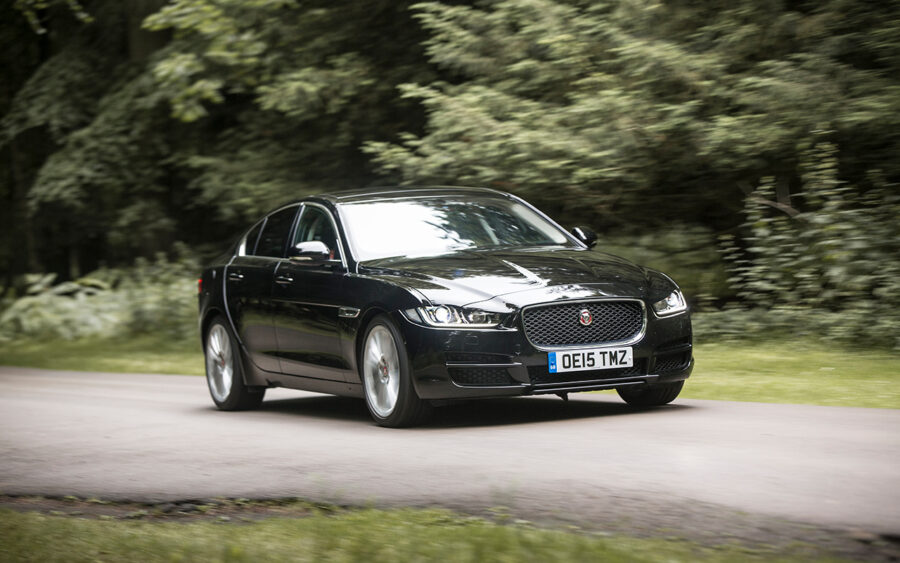
Suspension, steering and brakes
The XE’s suspension is similar to that on the XF and F-Type, with a tall hub/upright at each front corner, a large lower arm at the bottom and a slender wishbone at the top, a vertically-mounted coil-over in between and an anti-roll bar fitted between the lower arms, plus the familiar-looking banana-shaped control arm.
At the rear, there’s a subframe assembly with upper and lower arms, coil-overs and an anti-roll bar. Some models, such as the V6 S, have adaptive dampers, which are electronically controlled. Sports suspension on the R-Sport can be harsh, especially if the standard 18” wheels have been changed for 20” with rubber band tyres.
Neville at Jaguar Spares Northeast says that he sells plenty of the banana arms, which is typical of many Jaguars. The large frontmost bush often wears, resulting in brake judder in the case of the XE, which Neville says is often incorrectly diagnosed as warped brake discs. So, if brake judder is felt during a test drive, the large frontmost bush for this suspension arm can be checked with a pry bar. Budget for around £100 or more for a replacement arm, which contains new bushes.
With servo-assisted discs all round, an electronic handbrake and features such as ABS and AEB, aside from the issues we’ve mentioned, the brakes should remain reliable if they are routinely inspected and serviced. Issues such as premature wear of the rear pads and discs could be down to a dragging handbrake that hasn’t been calibrated, so after a test drive, feel for excessive heat from each brake disc (but don’t touch them). If it’s safe to park the vehicle on level ground with the handbrake off and neutral selected for the gearbox, check whether the car can be physically moved to see if the handbrake is free.
Expect to pay £85-£180 for a pair of brake discs and under £60 for brake pads. Parts prices can be very cheap, but as Matt at North Wales Jag Centre warns, “We see a lot of issues with corroded rear brake discs, more so just for poor quality.” And remember that replacing the rear discs and pads isn’t a simple DIY job without the appropriate electronic diagnostic tool to put it into service mode and avoid the risk of it activating and causing an injury. Budget on £150 for a suitable scan tool. Any problems concerning those rear brakes and the electronic handbrake may be expensive to fix. A replacement rear brake caliper, for instance, costs £120-£300, whereas an actuator for the electronic park brake (handbrake) costs around £100 for each side.
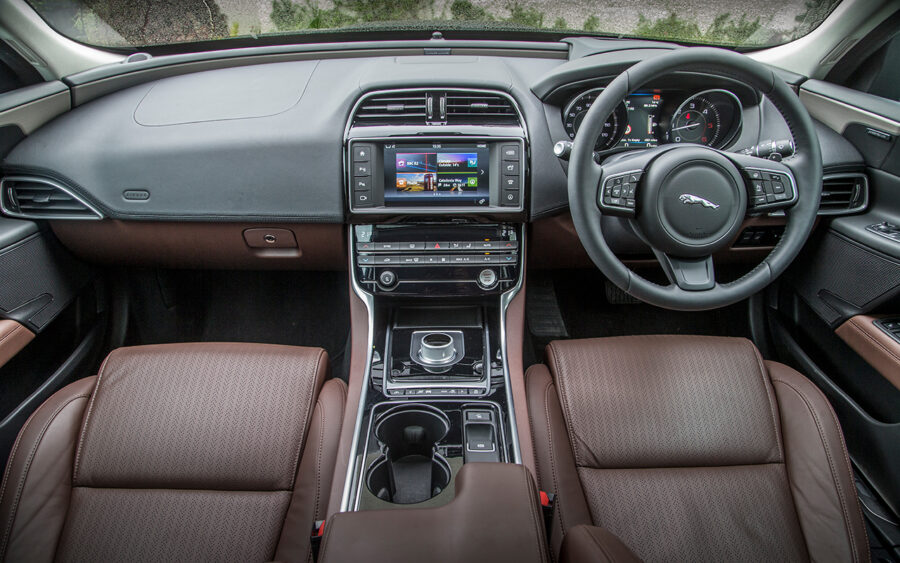
Interior, trim and electrics
The Jaguar XE has been criticised for its lack of interior room, especially for rear seat passengers, where there’s limited leg space. For a vehicle that’s 4672mm long and 2075mm wide, it’s hardly small on the outside, but if you intend to fill the rear seats with one or more people, check they can fit if they are adults and won’t quickly outgrow the car if they are children.
Despite the negative opinions on rear seat legroom, the boot doesn’t disappoint at between 400 and 500 litres (sources vary greatly), and with split rear seats, it can partly or fully extend into the cabin if needed to help double that space again. The AdBlue tank on diesel models does make the aperture annoyingly narrow though.
ABS-related issues are a common problem according to Eurojag, and they sell plenty of ABS sensors for around £30 each (used), while a genuine new sensor from Jaguar costs around £85. It should take around half an hour to replace one, providing it’s not corroded, but as Adam at Tom Lenthall warns: “There is an issue where water is getting into the hub and corroding the sensor and in the worst case, the reluctor ring on the bearing. There was a technical bulletin which stated to drill a drain hole, but this may not be available any more.”
Should the corrosion have spread to the sensor and the reluctor ring, all is not lost, because Eurojag sells a used hub assembly with upper wishbone (to ensure the upper wishbone’s outer ball-joint is the correct match) for £120.

Matt at North Wales Jag Centre explains, “ABS issues with front hubs are common, and I always advise a new wheel bearing assembly and a sensor. You must order new bolts though as they are different from the ones removed from the car.”
Elsewhere on the XE, Eurojag has found there are problems with the touch screen for the sat-nav and issues with the infotainment. There have been complaints of the sat-nav being awkward to use, unreliable (it can crash) and if the SD card that it uses is lost, you don’t have any means of navigation.
In some cases, the same touchscreen is fitted to the XF and late XJ, and they sell for between £216 and £432 used at Eurojag. Head units cost £120 to £360 used.
The stop-start engine function can sometimes be unreliable, often caused by low battery voltage – most systems will not work if the battery voltage is insufficient to operate the starter motor to turn the engine and fire it back into life.
Jaguar XE: our verdict
The early petrol-engined Jaguar XE appears to have all the right ingredients for a sporty Jaguar – rear-wheel drive, a turbocharged four-cylinder or supercharged V6, lightweight aluminium bodywork and a range of highly equipped models. It’s let down by a lack of a manual gearbox, but if you can put up with an automatic, then the petrol engine XE seems to be a reliable mid-sized saloon for a vehicle that’s approaching the end of its first decade.
While cheap is not always best, there are some seemingly tempting bargains for second-hand XEs at around £10k, or sometimes less, although such examples often include an insurance claim, such as a cat N (non-structural) or cat S (structural, but repaired). Expect to pay over £12,000 for a four-cylinder petrol XE that hasn’t been involved in an insurance claim and over £15,000 for the supercharged V6.
When compared to competitors like as the BMW 3 Series of the same age, the Jaguar XE is roughly twice as expensive to buy, but perhaps that’s reassuring when it comes to depreciation. And comparing the petrol XE with its equivalent diesel, you’ll find the diesels are also about half their price. The reason appears to be reliability, with the diesel XE having more potential problems.

